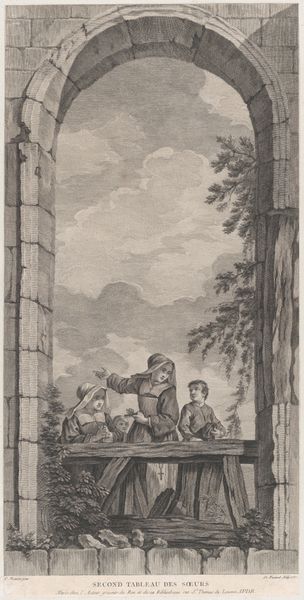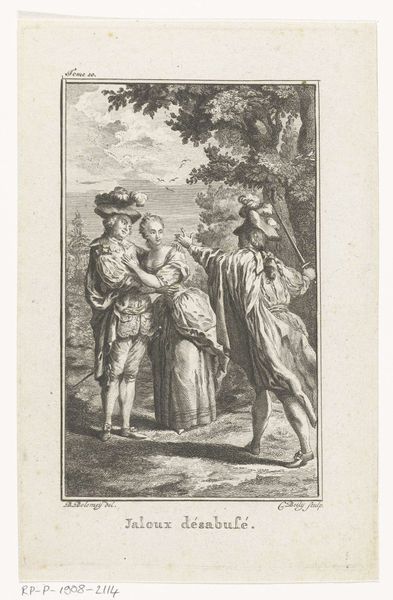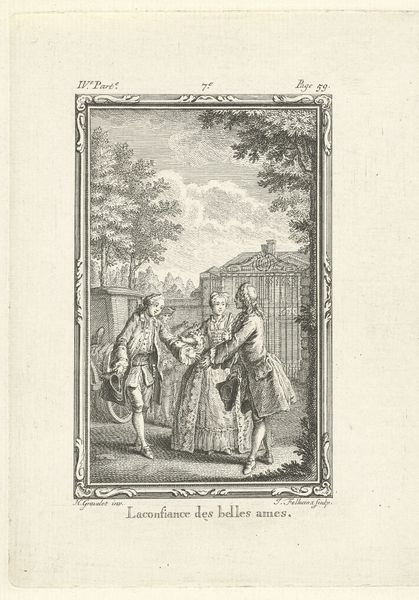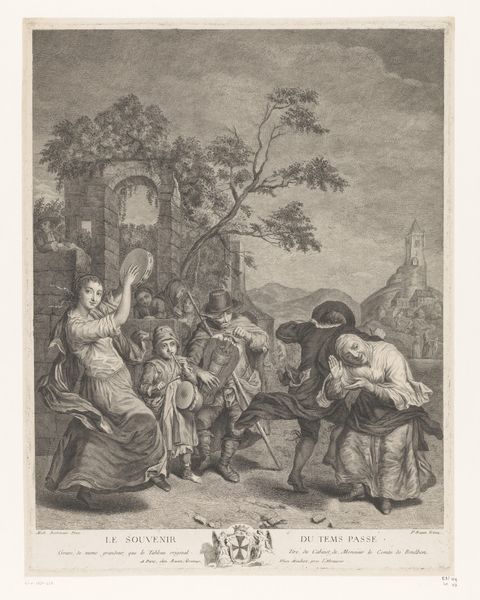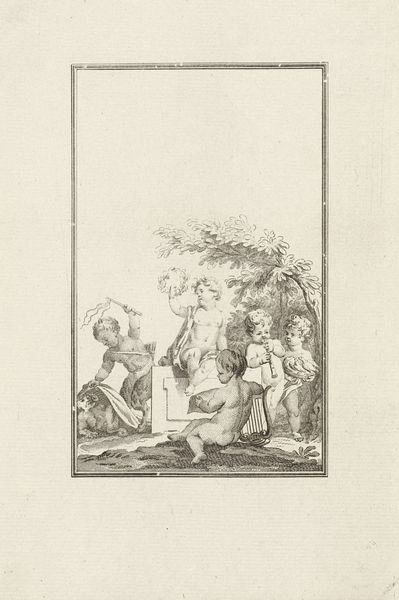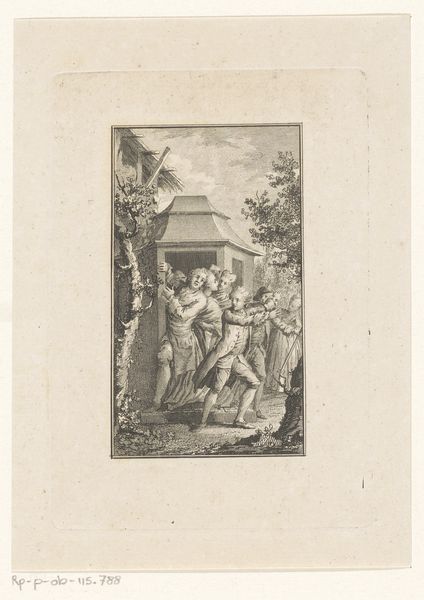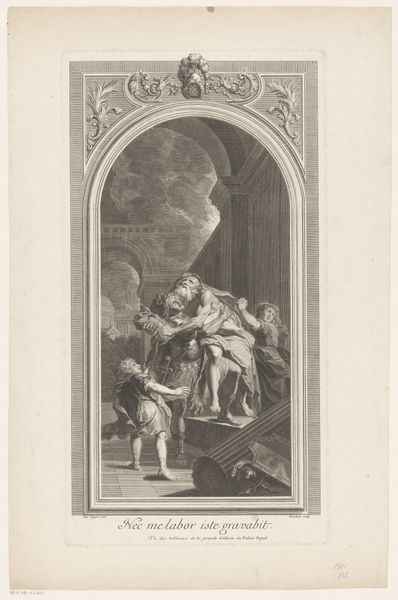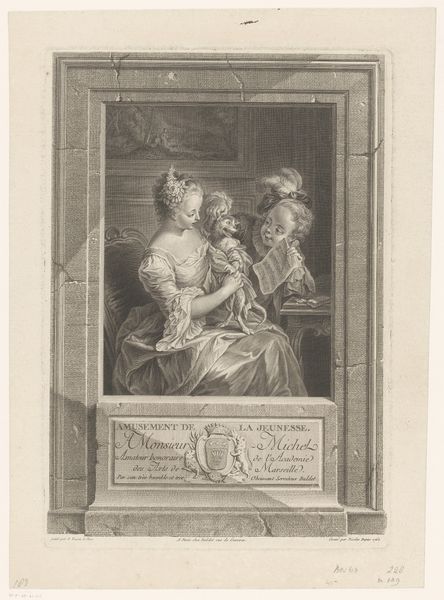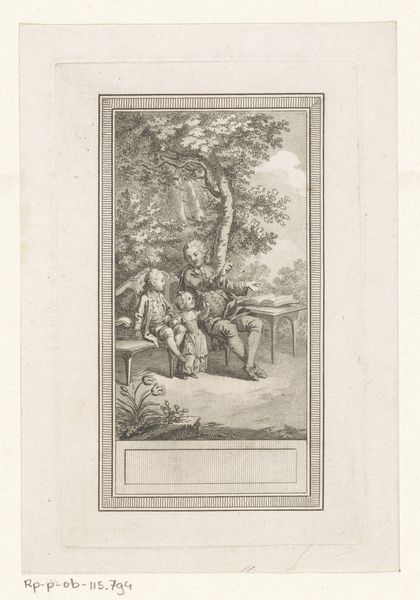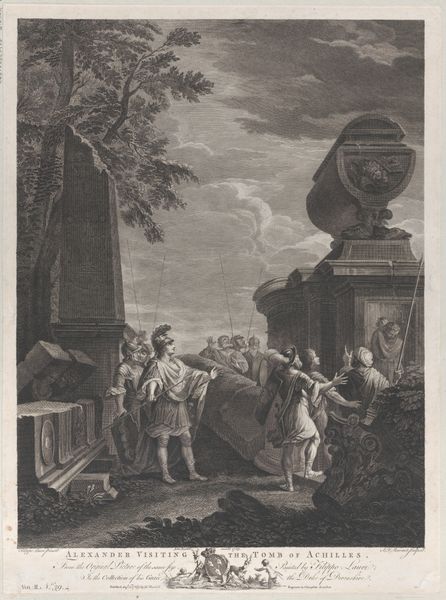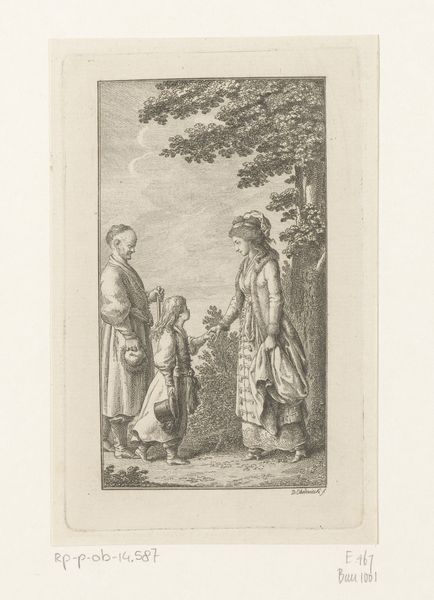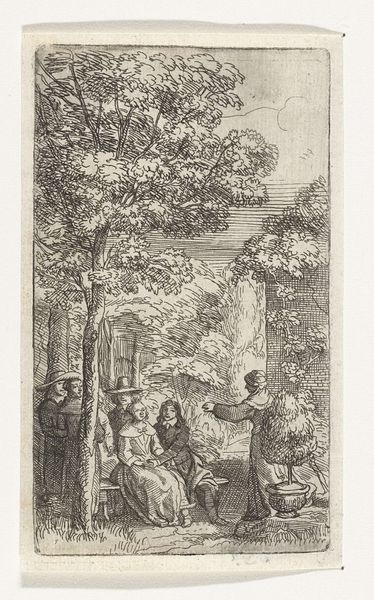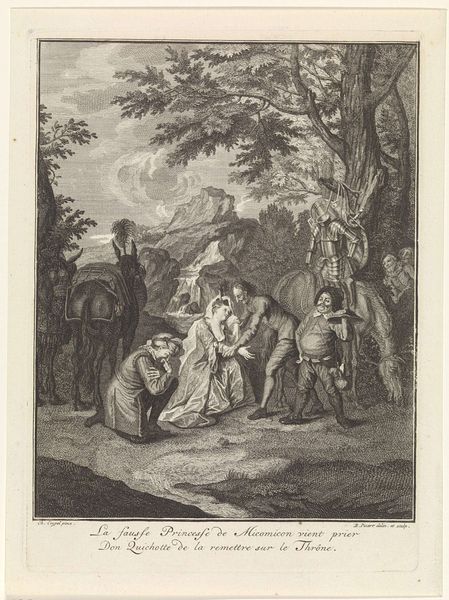
The Chapel of the Enfants-Trouvés in Paris: Religieuse et petites filles regardant la crèche 1756
0:00
0:00
drawing, print, engraving
#
drawing
#
baroque
# print
#
figuration
#
line
#
genre-painting
#
history-painting
#
engraving
Dimensions: Sheet (Trimmed): 22 7/16 × 11 1/8 in. (57 × 28.2 cm)
Copyright: Public Domain
Curator: This print, titled *The Chapel of the Enfants-Trouvés in Paris: Religieuse et petites filles regardant la crèche,* was completed in 1756 by Etienne Fessard. Editor: The somber palette evokes a mood of quiet reflection. It is framed by rough stonework, which contrasts sharply with the tender scene playing out within. Curator: Indeed. Note the interplay of line and shadow; Fessard uses hatching to create volume and depth, emphasizing the architecture around the figures and sky beyond. The line work throughout the drawing is incredibly meticulous. Editor: What is fascinating is the printmaking process itself. Think about the labor and skill required to create this level of detail. The artist meticulously transfers their vision through a series of manual processes using etching tools, revealing a history of artisanal craftsmanship. Curator: The composition guides our eye toward the center of the print. Observe how the lines of the architectural structure frame and draw us toward the figures. It’s masterful the way he arranges the light and dark areas in such a limited colour scheme, don't you think? Editor: Certainly. But the engraving also speaks to a culture that supported these foundling homes. There's a socio-political undercurrent visible in how it represents these abandoned children being taken care of by a religious sister. This challenges notions of caregiving being solely familial and examines institutionalised philanthropy during the Baroque era. Curator: Precisely! The architecture itself communicates power. It speaks volumes. In Fessard's arrangement, everything funnels into a point of sacred care. I think the visual elements highlight these complex issues subtly, even poetically. Editor: Yes, and hopefully it will get people to consider how social welfare models were literally constructed, from sourcing building material to funding to long-term maintenance. Looking closely uncovers narratives about marginalized members of society and reminds us about societal needs and moral considerations. Curator: A truly multifaceted creation, worthy of continued observation. Editor: Agreed. Its textures prompt meaningful engagement with the themes of this print.
Comments
No comments
Be the first to comment and join the conversation on the ultimate creative platform.
